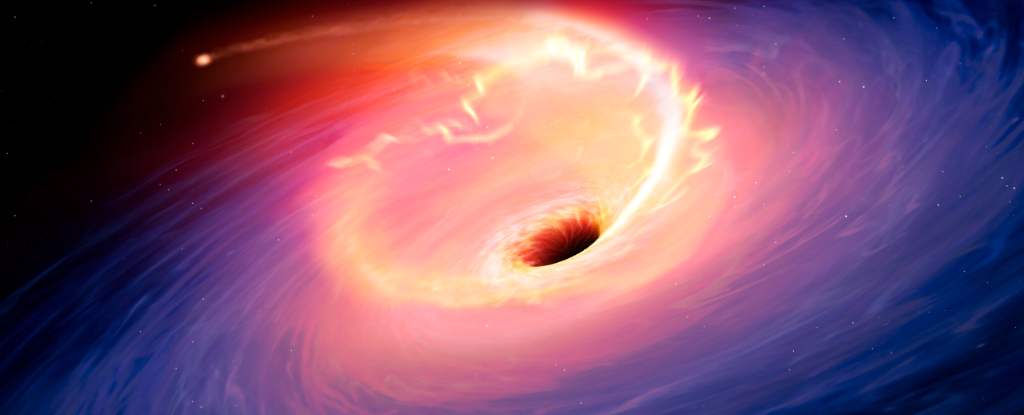Black holes are notoriously destructive to stars near them. Astronomers often see flashes representing the death throes of stars collapsing past the event horizon, a black hole they got too close to.
However, in rare instances, a star isn’t wholly swallowed by its gigantic neighbor and is pulled into an orbit, causing a much slower death, which would probably be more painful if stars could feel anything.
A new study using X-ray results from Chandra and some other instruments details a supermassive black hole at the center of a galaxy far, far away that is slowly devouring a star it has captured in an orbit, and it could teach them more about a variety of interest physical processes.
The new paper is the latest in a series that goes back a few years. It started with the discovery of AT2018fyk, a “tidal disruption event” (TDE), back in 2018. A TDE is what astronomers see when a star is devoured by a black hole. AT2018fyk was originally captured by NASA’s Neutron star Interior Composition Explorer (NICER). Follow-up observations were completed by Chandra and XMM-Newton, ESA’s X-ray telescope.
In a typical scenario, that would have been the end of the story – the star got eaten, emitted some exceptionally strong X and UV rays, and we captured them using our instrumentation 860 million light years away. However, astronomers noticed another spike in X-ray and UV emissions coming from the same black hole about two years later.
frameborder=”0″ allow=”accelerometer; autoplay; clipboard-write; encrypted-media; gyroscope; picture-in-picture; web-share” referrerpolicy=”strict-origin-when-cross-origin” allowfullscreen>
That second luminosity spike was likely caused by the star being partially devoured again as it was captured in a highly elliptical orbit around the black hole. Once every few years, it approaches closely enough that more of its material is ripped away, causing another TDE. But this time, scientists were ready and devised a hypothesis for when the TDE would end.
Their calculations pointed to August 2023, so they asked for observational time on Chandra. Sure enough, on August 14th, 2023, they saw a significant dimming of the emissions from the black hole. Either the star finally succumbed completely and was torn apart, or it made it out alive again and will continue its eccentric dance around its much bigger neighbor.
Either way, it definitely loses mass each time, as the second event is less luminous than the first. By that logic, the next one should be even less luminous if there is even a third event.
The star at the heart of AT2018fyk might not have been alone originally. The researchers predicted that it was part of a binary star system, but its partner star was ejected once the pair were caught up in the gravitational well of the black hole. It is now traveling much faster away from that black hole and might have enough momentum to leave its galaxy entirely.
Its partner was not so lucky. It remains to be seen if the star has enough material left for a third round of luminous burnoff. The system’s physical characteristics predict that the subsequent increase in brightness will happen between May and August of 2025 and would last for approximately two years, much longer than previous changes.
Given the interest this system has now piqued and its ability to test theories about rare events like TDEs, the research team will likely be able to find some more observational time next year to check for the potential third snack of this exciting black hole.
This article was originally published by Universe Today. Read the original article.





